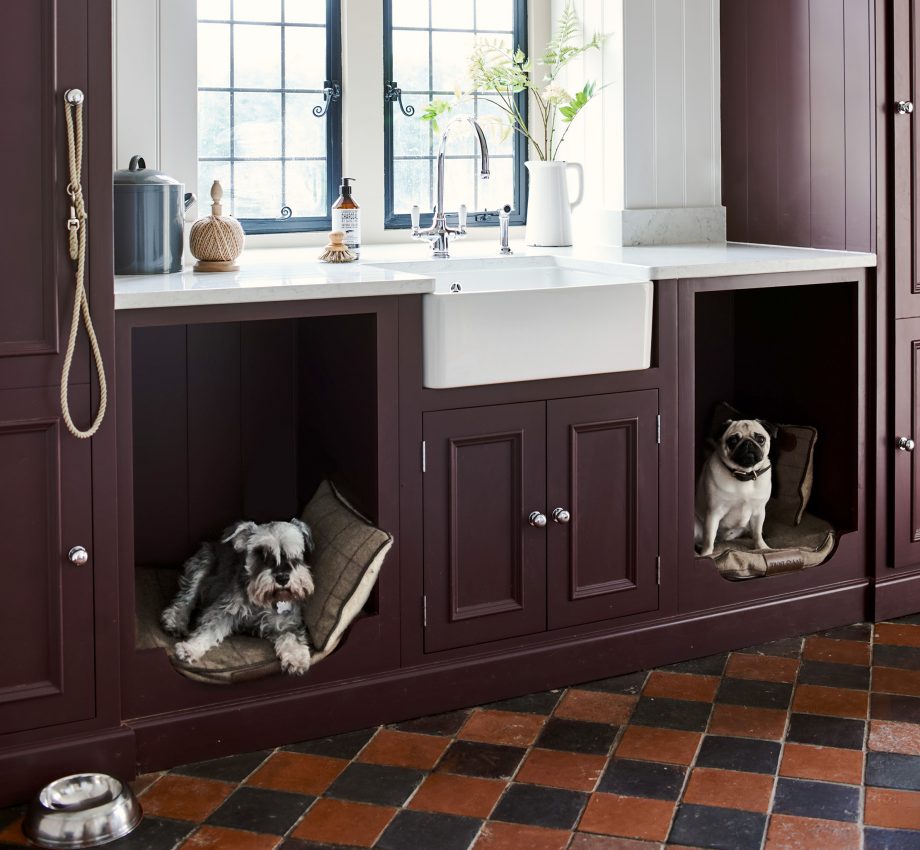When choosing his kitchen, George Gardener felt uninspired by the choice of cabinetry — and took a rather unusual step to doing something about it.
Having run his award-winning architectural practice for 25 years, George Gardner was itching for a change. ‘I didn’t want to spend the next 25 years doing the same thing,’ he explains of the decision to sell his practice and property-holding company five years ago. ‘Being financially liberated gave me the opportunity to think freely and creatively.’
He and fellow architect Peter Foulk turned themselves into an ideas factory, focusing on kitchens. ‘I had recently bought kitchens for my own home and commercial properties and simply hadn’t found anything special — everything seemed so similar, with a choice, broadly, of German handleless or Shaker-style designs,’ recalls Mr Gardner. ‘We found ourselves with the time and opportunity to invest in creating designs for furniture that hadn’t been done before.’
It was the start of ELK (Extreme Logic Kitchens), which opened its doors in 2018. Passionate about protecting the environment, sustainability and minimising waste, Messrs Gardner and Foulk dedicated themselves to engineering wood so as to use the minimum of it in the construction of their kitchens. ‘The strongest part of a tree is at the crux, where a leading branch bifurcates from the main trunk, at 45 degrees in an oak tree,’ he explains. ‘This led us to start exploring the idea of an alternative geometry for furniture.’
Using a specially developed, strong, yet lightweight, three-dimensional framework (patent approved), their kitchens are made with up to 50% less material than standard cabinet carcasses. The framework for the O’45 collection allows for V-shaped ‘utility centres’ and diagonal drawers that offer easily accessible and fully visible storage. ‘The efficiency is massive,’ says Mr Gardner.

The same logic-driven approach has been used in the development of the Grid kitchen collection, which uses a similar framework to deliver a stepped arrangement of horizontal to vertical storage, including unique L-shaped drawers. As with all ELK designs, storage solutions are ‘optimised to use less, but give you more’. ‘Our aim is to surprise and delight through expressing function in a new and alternative way,’ continues Mr Gardner.
All kitchens are bespoke, designed and made at the ELK workshop in Hampshire, using predominantly solid timber, from responsible sources, including English Woodlands Timber, known for supporting sustainable woodland management. Chestnut, oak, ash and Scottish elm are favourites, often combined in light and dark shades to highlight the unusual shape of the furniture. Paints and lacquers used are water-based.
Next comes the expansion of ELK’s collection of furniture, including dining tables and chairs, console tables and wardrobes. Even chairs are designed with a characteristically ELK twist, combining ‘angular and curvilinear’ shapes for elegance with comfort.
‘What excites me is breaking new ground,’ Mr Gardner says. ‘There’s not a day that goes by without us inventing something.’
ELK Kitchens — www.elk-kitchens.com
11 of the best new ideas in kitchens, from ‘levitating’ kitchen units to the ultimate wine fridge
The world of kitchens seems to produce ceaseless innovation. Amelia Thorpe picks out some of the latest looks and cleverest

Canine cubbyholes: Dogs have taken over our homes — and now they’re taking over our kitchens too
Country Life's interiors editor Giles Kime on a bold new idea which bows to the inevitable and gives a pair

Colourful kitchens: Why even a dash of a bold, vibrant hue goes a long way in a kitchen
A generation or two ago, kitchens were routinely re-done in bright colours — and there's something in colourful kitchen design even





